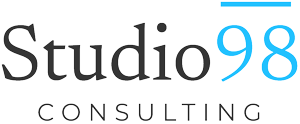Below are descriptions of what the different parts of a website page are and what they do.
It helps to know what these are properly called and how they can improve a page on your website. By knowing what each section and button does on your website, it helps that much more in getting a design and layout done fast.
It helps to know what these are properly called and how they can improve a page on your website. By knowing what each section and button does on your website, it helps that much more in getting a design and layout done fast.
The less back & forth we have to do when getting approval on a website design, the faster we can finish up a project and the faster you can have your website up for the world to see!
Testimonials – Evidence or proof provided by the existence or appearance of something. A past clients written statement about their experience with your company.
Footer – The bottom section of a website is also known as a footer. This area typically contains the name of the company or organization that publishes the website along with relevant copyright information. Some websites may also include basic navigation links such as “About Us,” “Contact,” and “Help”. Corporate website footers often include additional links to “Terms of Use,” “Privacy Guidelines,” and “Advertising” pages as well.
Call to action – In marketing, a call to action (CTA) is an instruction to the audience to provoke an immediate response, usually using verbs such as “call now”, “find out more” or “visit a store today”.
Body copy – Main text part of a website, or any printed matter
Header – The header of a web page typically includes the company or organization’s logo, as well as the main navigation bar. This section resides at the top of each web page.
Slider – An area to display photos, text, forms, videos or advertisements.
Text Header – The title, subtitle, or topic that stands at the top or beginning, as of a paragraph, letter, or chapter.
Navigation – Web site navigation is the science and skill which you apply to a website that helps visitors move from one page to another.
Rollover – an action found within a web page, used to provide interactivity between the user and the page itself. The effect that happens when you move your mouse over a particular object.
